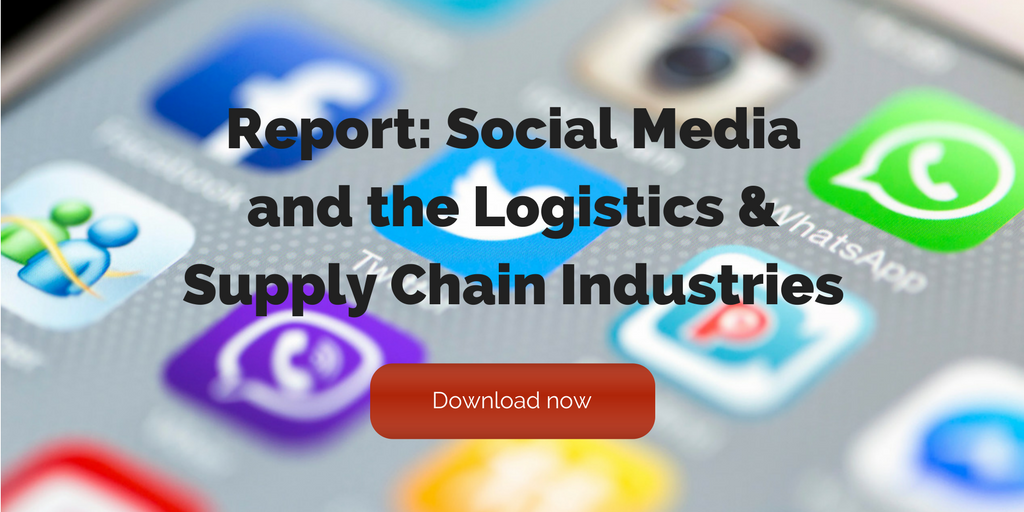
by Fronetics | Sep 20, 2016 | Blog, Content Marketing, Logistics, Manufacturing & Distribution, Marketing, Strategy, Supply Chain, Warehousing & Materials Handling
A content marketing strategy helped one organization generate leads, increase web traffic, and drive sales and new business.
Why would my company blog? Do we really need to be on social media? What is a white paper, and who would read one that I wrote?
These are questions that many businesses in the manufacturing and warehousing space might ask. They don’t see or understand how they might benefit from content marketing.
TotalTrax might have asked the same sorts of questions several years ago. The company, which provides tracking technologies for manufacturing and warehouse operations, had experienced positive year-over-year growth for a decade. The website got decent traffic. Yet, there was a sense that there were many untapped opportunities for growth.
TotalTrax hired Fronetics Strategic Advisors to create and implement a content marketing plan to maximize the company’s digital presence. TotalTrax wanted to see results in the form of increased web traffic, new and better leads, and revenue. Fast forward 24 months, and that’s exactly what happened.
Content helped TotalTrax to achieve:
- 19% increase in overall web traffic
- 500% increase in traffic from social media
- 244 high-quality leads
- 30% net increase in new customers
- 10% growth in sales revenue
To learn more about how Fronetics helped TotalTrax maximize results from a digital and content marketing program, download our case study below.

Related posts:

by Fronetics | Sep 19, 2016 | Blog, Content Marketing, Marketing, Social Media
Twitter is changing its rules on the 140-character limit for your tweets.
In May, Twitter announced that it planned to make changes to the types of content that count toward the platform’s 140-character limit. The social network provided no firm timeline as to when the changes would take place, but The Verge reports that September 19th is the big day.
What are the changes? And what do they mean to you?
Media attachments including photos, GIFs, videos, polls, and Quote Tweets will no longer count toward your 140-character limit. Also no longer counting toward the character limit: @names in replies.
Other changes:
- The ability to retweet and quote yourself so that you can share new insight on one of your Tweets, or share it again if you feel like it went unnoticed.
- Tweets that begin with a username will reach all your followers. This means that you will no longer need to use the awkward ”.@” convention.
Together these changes mean that you will have more flexibility in communicating via Twitter.
It isn’t clear if all the announced changes will occur simultaneously, or if they will be rolled out separately.
Related posts:


by Fronetics | Sep 15, 2016 | Blog, Content Marketing, Marketing, Strategy, Talent
Content marketing is significantly more effective when a designated leader is driving your strategy.
Who is leading your content marketing strategy? If you don’t have an immediate answer, your content marketing program probably will not be as effective as it could be.
Research shows that companies who designate someone to drive the execution of their content marketing strategy have greater success than those that do not. So your strategy should account for leadership, specifically naming a person or position that will be in charge of implementation, problem-solving, and measuring results.
Who could take on this role for your business? Here are a few ideas.
An executive
Curata reports that, by 2017, 51% of companies will have an executive in their organization who is directly responsible for an overall content marketing strategy. That’s how important it is to have someone leading your strategy: More than half of organizations will create or designate positions like chief content officer, VP of content, or director of content. If your company is large enough to support this human resource, you’ll likely reap great benefit from your content marketing efforts.
A marketing director
Is there a senior person on your marketing team with experience using content as a marketing tool? Having a marketing director lead your content strategy is a great option for companies who can afford to delegate some of that person’s responsibilities elsewhere to make room for this work. Marketing directors are generally organized and capable of leading a diverse team, and they are used to reporting on KPIs as they relate to marketing efforts.
Whoever produces most of your content
Many smaller or mid-sized companies don’t have large marketing teams, and instead rely on several people to take on content-production responsibilities in addition to their everyday tasks. These are the people who will be most familiar with your company’s content and strategy, and how they align with your business goals. Do any of these people have leadership abilities or experience running a cross-functional team? It could be worth outsourcing some content writing or production in order to allow that person to drive your content marketing strategy.
An advisory firm
Sometimes you don’t have the internal resources or expertise to execute your business’ content marketing on your own. Hiring a firm or professional to create and/or execute your strategy can take enormous pressure off of your employees. They are left to do their jobs, while an experienced team shoulders the burden of planning, producing, and reporting on the progress of your content marketing program. Such a partnership can be very beneficial to companies of all shapes and sizes.
Related posts:


by Fronetics | Sep 13, 2016 | Blog, Content Marketing, Marketing
Considering outsourcing some or all of your content marketing? Check out these statistics.
Companies turn to content marketing to build brand awareness, generate leads, and drive sales. But the constant creation and distribution of original content can drain an organization’s resources. That’s why many choose to outsource all or some of their content marketing efforts to content partners or marketing firms.
If your business is exploring outsourcing as an option, here are some statistics that you might find interesting.
13 stats about outsourcing content marketing
51% of B2B marketers list lack of time/bandwidth to create content as one of their top content marketing challenges, and 50% list producing enough content variety/volume as well. (LinkedIn Technology Marketing Community)
30% of B2B marketers say an external agency/consultant is one of the top resources for content creation for their organizations. (LinkedIn Technology Marketing Community)
The two most outsourced content marketing activities:
- Writing (44%)
- Design (41%)
(LinkedIn Technology Marketing Community)
Marketers are outsourcing 18% of their content, with the remaining content being created in-house, curated or syndicated. (Curata)
Only 25% of marketers don’t outsource any content creation. (LinkedIn Technology Marketing Community)
About two-thirds of marketers outsource less than one-third of their content creation. (LinkedIn Technology Marketing Community)
Business bloggers outsource 14% of their blog posts. The best practitioners outsource 24%. (Curata)
What are the most effective resources for video marketing content creation?
- Combination of outsourced and in-house resources (70%)
- Outsource to a specialist (22%)
- In-house resources only (8%)
(Ascend2 2015 Study)
Related posts:

by Fronetics | Sep 7, 2016 | Big Data, Blog, Data/Analytics, Logistics, Strategy, Supply Chain
While the temptation to invest in big data may be strong, small and mid-sized companies might be better off starting with small, more manageable analytics.
Big data has become a big business. A 2016 Forrester report forecasts that the big-data management business will grow by 12.8% by 2021. It’s easy to see why, with the prevalence of stories from brands like Wamart and Rolls Royce that have perfected the science of capitalizing on detailed insights about customer behavior.
But many organizations — particularly small to mid-sized companies — are learning that big data does not always equate to big payoffs. In fact, many organizations have sunk millions of dollars into sophisticated data-analytics software only to realize they don’t have the capabilities to interpret the new insights nor the expertise to turn them into a competitive advantage.
Big data and the supply chain
Companies within the logistics and supply chain industries aren’t immune to this trend. An Accenture survey of more than 1,000 supply chain executives found that 84% have already employed big-data analytics or are in the latter stages of planning to do so. Respondents reported:
- 17% have implemented analytics in one or more supply chain functions.
- Three out of 10 have an active initiative to implement analytics in 6-12 months.
- More than one-third (37%) were engaged in serious conversations about implementation.
The promising applications of big data and how it might “revolutionize” the supply chain are hard to ignore. Increased efficiency across the supply chain, improved forecasting, better cost control, more accurate inventory planning: the list of benefits go on and on. These could lead to a significant advantage for companies with the expertise, structure, and knowledge to collect, analyze, and draw strategy cues from large sets of raw data.
But, again, small and mid-sized companies usually aren’t well positioned to do so, unfortunately.
Instead, start small
Supply chain and logistics organizations that don’t have such capabilities — or the capital to invest in technology that can do it for them — should start small instead. Even if you eventually want to implement a big-data strategy, there is a long-term benefit to gleaning insight from small data sets in the interim.
Here are some steps for getting started:
1) Determine your goals
Consider your business objectives and how you can leverage data to further your goals. Focus on just one or two areas for improvement, and clearly articulate what kinds of data you want to collect as they relate to those objectives.
2) Identify your sources
From where will you collect your data? Analyzing numerous data sets from a variety of sources will leave your head spinning and you none the wiser. Also determine which metrics will be most helpful to you, and which you can set aside.
3) Pick your people
If your company doesn’t have in-house analytics expertise, work to attract the appropriate talent. Regardless, integration and structuring of analytic personnel positions will be a more significant factor in your success than your use of even the most advanced statistical software program.
4) Master reporting
Finally, spend some time determining how your findings should be presented. You’ll want them to be formatted in a clear, digestible manner with a clear application for how they will improve your business.
Related posts:








